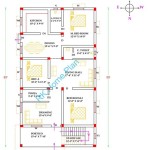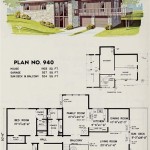Drawing Up House Floor Plans: A Comprehensive Guide
Creating a house floor plan is an essential step in the home design and construction process. It serves as a blueprint, outlining the layout, dimensions, and functionality of each room and space within the house. Drawing up a floor plan is crucial for effective communication between architects, builders, and homeowners, ensuring that everyone is on the same page regarding the vision for the house. This article will delve into the essential aspects of drawing up house floor plans, providing a comprehensive guide for those embarking on this crucial stage of home design.
Understanding the Process:
Drawing up house floor plans involves a systematic approach that encompasses several steps. It begins with gathering information about the homeowner's needs and preferences, including the desired number of rooms, their sizes, and the overall style of the house. The next step is to create a rough sketch of the proposed layout, incorporating features such as windows, doors, and staircases. This sketch is then refined into a more detailed floor plan, using specialized software or traditional drafting techniques. The final floor plan serves as the basis for the house's construction, providing the architect and builders with the precise dimensions and specifications needed to bring the design to life.
Key Considerations for Drawing Up Floor Plans:
When drawing up house floor plans, it's important to consider several key factors to ensure a functional and aesthetically pleasing design. Some of the crucial considerations include:
1. Functionality and Flow:
The floor plan should prioritize functionality and flow, creating a natural and intuitive path for movement within the house. This means considering the placement of rooms and their proximity to each other. For example, placing the kitchen close to the dining room and living area promotes a seamless flow for meal preparation and entertaining. Similarly, placing bedrooms away from noisy areas ensures a peaceful and restful environment.
2. Space Utilization:
Efficient space utilization is paramount in home design. The floor plan should maximize the available square footage, ensuring that each area is functional and well-defined. It's vital to avoid creating wasted space or areas that feel cramped. This can be achieved by strategically placing furniture, appliances, and other fixtures, taking into account their dimensions and intended use.
3. Natural Light and Ventilation:
Adequate natural light and ventilation are essential for a comfortable and healthy living environment. The floor plan should incorporate windows and doors strategically to maximize sunlight penetration and air circulation. This is particularly important for rooms like the living room, kitchen, and bedrooms, where people spend a significant amount of time.
4. Building Codes and Regulations:
Complying with local building codes and regulations is critical for the legality and safety of the house. The floor plan must adhere to these standards, including requirements for structural integrity, fire safety, and accessibility. This ensures that the finished house meets the minimum safety and quality standards.
Essential Tools and Techniques:
Drawing up floor plans requires the use of specialized tools and techniques. Several options are available, ranging from traditional drafting methods to modern software-based solutions. Here are some common approaches:
1. Traditional Drafting:
Traditional drafting involves using pencil, paper, and drafting tools such as rulers, compasses, and T-squares. This method requires meticulous attention to detail and a solid understanding of drafting conventions. Though time-consuming, it allows for a high level of accuracy and control, particularly when it comes to intricate details.
2. Computer-Aided Design (CAD) Software:
CAD software offers a more efficient and versatile approach to floor plan creation. Programs like AutoCAD and Revit enable users to create detailed and accurate floor plans with ease. These software packages allow for precise dimensioning, symbol insertion, and layer management, simplifying the process and enhancing productivity. They also allow for 3D visualization, providing a realistic representation of the intended design.
3. Online Floor Plan Creators:
Online floor plan creators offer user-friendly interfaces and simplified tools for creating basic floor plans. These platforms are ideal for homeowners with limited design experience, providing a straightforward way to visualize their ideas and communicate them effectively with builders. While they may not offer the same level of detail and customization as CAD software, they provide a convenient and affordable option for basic floor plan creation.
Regardless of the method chosen, it's essential to use clear and consistent symbols and dimensions to ensure accurate communication throughout the construction process.

Drawing Up Floor Plans Dreaming About Changes Young House Love

Floor Plan Creator And Designer Free Easy App

Recreating A Real Life Up House In Utah Hooked On Houses

Make Your Own Blueprint How To Draw Floor Plans Drawing House Sketch Plan

Make Your Own Blueprint How To Draw Floor Plans

Ready To Use Sample Floor Plan Drawings Templates Easy Blue Print Floorplan Ezblueprint Com Drawing Plans Classroom

House Plans How To Design Your Home Plan

How Long Does It Take To Draw Up House Plans

Where You Can Buy House Plans Live Home 3d

Create Your Own Floor Plans House Design Interior Plan Programs








